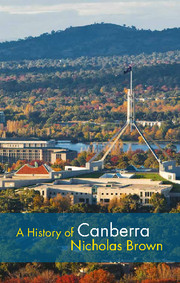Introduction
Published online by Cambridge University Press: 05 July 2014
Summary
On 11 May 1861 James Brown died in a paddock on one of the land grants taken up in the early decades of settlement on and around the Limestone Plains. In 1834, aged 19, he had been convicted of assault and theft in Edinburgh. Sentenced to transportation and seven years’ labour, he arrived in Sydney and was assigned to James Wright at Lanyon, now a heritage listed property from which the spread of Canberra’s newer suburbs is kept only just out of sight. But at the time Brown arrived, Lanyon was at the further edges of pastoral expansion in New South Wales, and was described by an early visitor as ‘one of the most picturesque places I have seen in the colony’ even before ‘art’ contributed to its ‘improvement’. That ‘art’ was essentially convict sweat, and Wright was for a time infamous for his fastidious attention to the punishments that kept his workers at their tasks. Enduring this regime, receiving a ticket of leave in 1839, and declared free in 1842, Brown stayed on as an overseer at Lanyon, which was sold amid drought and an economic slump. A Scottish banker, Andrew Cunningham, bought it in 1848, but it was on Cunningham’s other, nearby choice of ‘cold, wet and sour country’ at Congwarra, that Brown was killed by a falling tree. His burial was the first recorded in the district after compulsory registration – but his grave remains unmarked in Lanyon’s small cemetery. He was, Cunningham lamented, ‘my oldest and most trusted employee’.
Down the line the Browns stayed in the district, first as pastoral workers before, in the third generation, gaining land for themselves at Bulga Creek, further down the Murrumbidgee River – and only then because the previous owners were not prepared to stay once their freehold was resumed for lease under the conditions of the new Federal Capital Territory, declared in 1911. It was on that property that my father, born in 1920, grew up. He proved bright at Canberra’s first convent school, where the nuns pressed him to complete his leaving certificate and sit an exam to join the Commonwealth public service – a favoured path, then, of advancement for Catholic boys. In 1938, he became a clerk in the Department of the Interior, which controlled Canberra’s development, although his section dealt with the alarming thinning of the life-blood of British migration to Australia.
- Type
- Chapter
- Information
- A History of Canberra , pp. 1 - 5Publisher: Cambridge University PressPrint publication year: 2014



